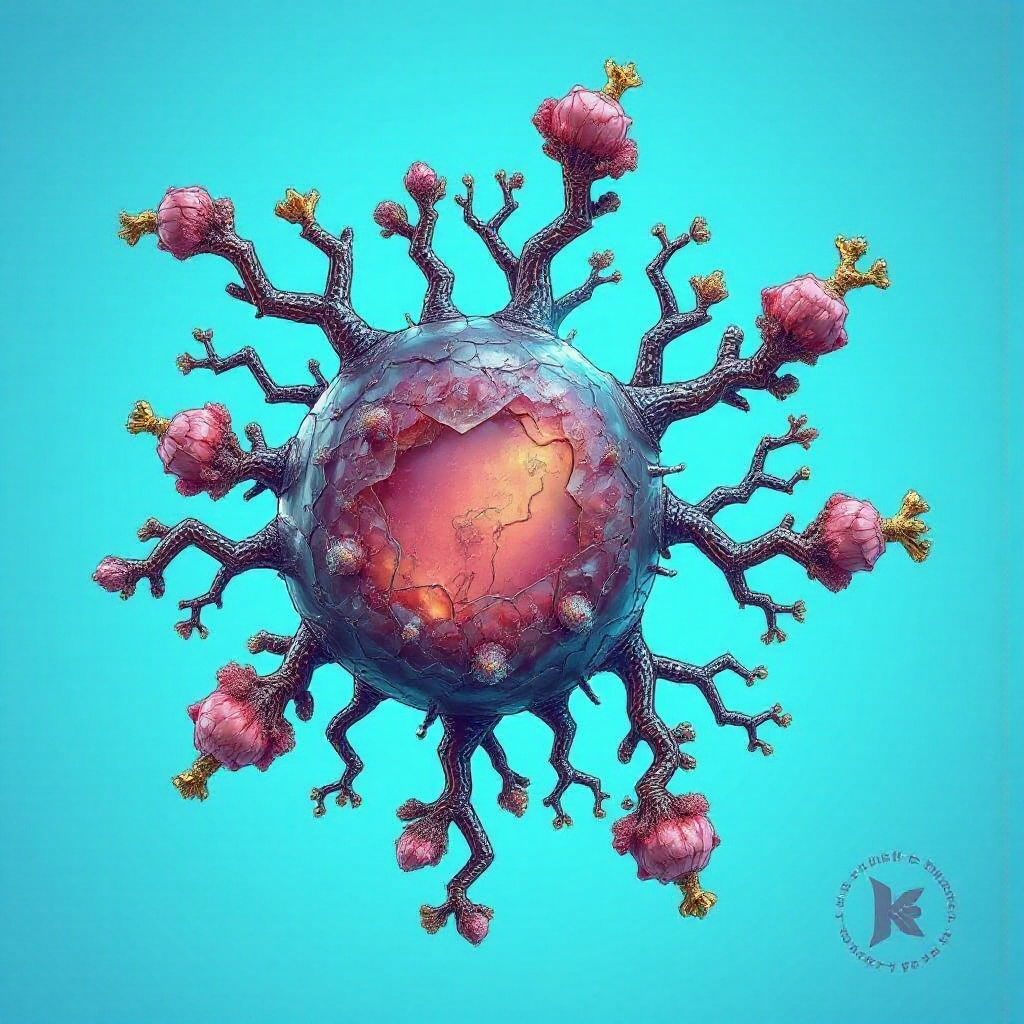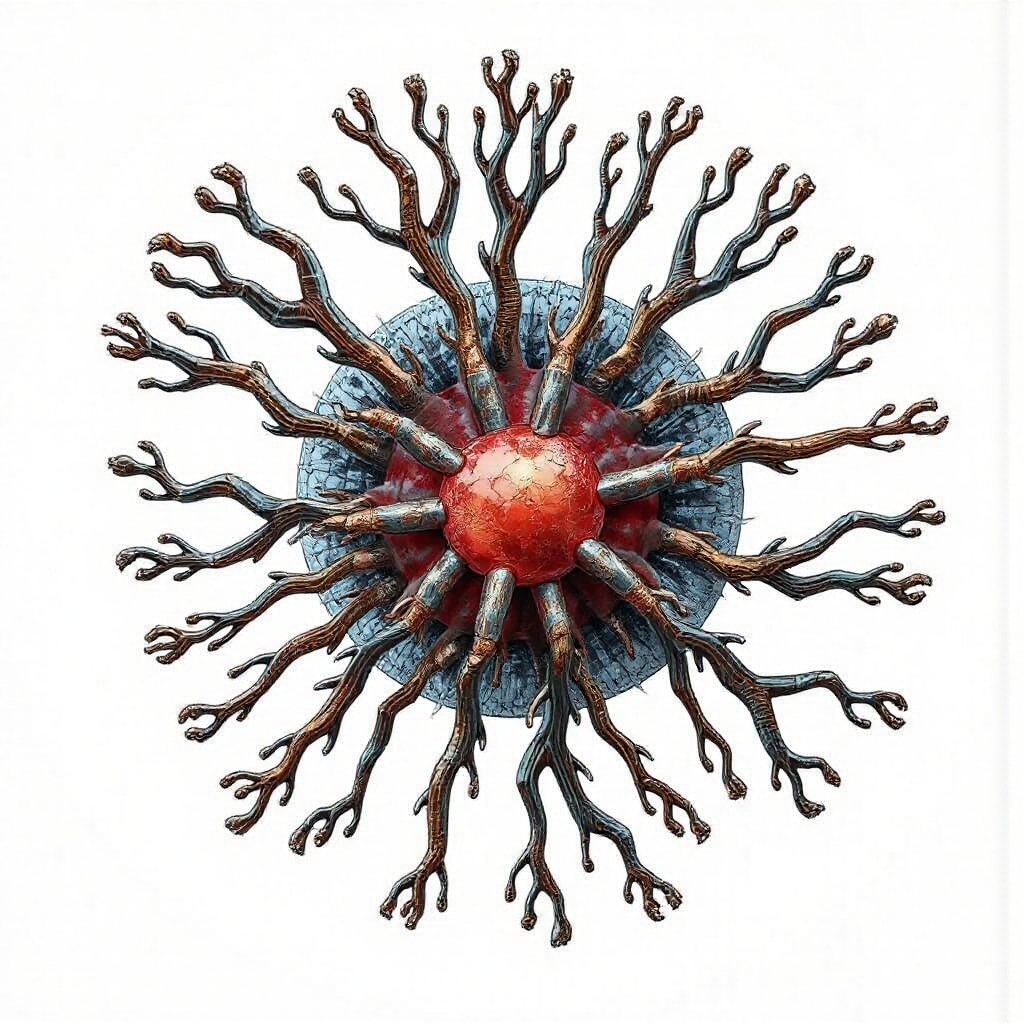What is Paraganglioma Causes and Symptoms

Paraganglioma is a rare type of neuroendocrine tumor that develops along major blood vessels and nerve pathways. These tumors often appear in specific regions of the body, such as the neck near the carotid artery, within the skull, or in the chest and abdomen. In the head and neck, they commonly occur in areas like the carotid body or near the ear. Early detection becomes crucial because recognizing its causes and symptoms can help you seek timely medical care.
Key Takeaways
Paraganglioma is a rare growth found near big blood vessels and nerves. Finding it early helps with better treatment.
Changes in certain genes, like the SDH gene group, can raise the chance of getting paragangliomas. Talk to your doctor about genetic testing if it runs in your family.
Usual symptoms are headaches, fast heartbeats, and trouble swallowing. Spotting these signs early can help you get care sooner.
Most paragangliomas are not cancer, but some can be. Knowing the difference helps you take better care of yourself.
See a doctor if you have symptoms or a family history of these conditions. Early checks can make treatments work better.
What is Paraganglioma?

Definition and Characteristics
Paraganglioma is a type of neuroendocrine tumor made up of chromaffin cells. These cells produce hormones that help regulate your body’s nervous system and release them into the bloodstream. While these tumors often start as benign, they can cause significant health issues due to hormone secretion. For example, they may release catecholamines, which can raise your blood pressure and lead to other complications.
These tumors typically form near clusters of nerve cells, also known as ganglia. They are slow-growing in most cases, but some may become malignant. A small percentage of paragangliomas are linked to genetic mutations or hereditary conditions, such as Neurofibromatosis or Multiple Endocrine Neoplasia syndromes.
Common Locations in the Body
Paragangliomas can develop in various parts of your body. They often occur in areas where nerve endings or ganglia are present. Common locations include the head and neck, particularly near the carotid artery or the base of the skull. You may also find them in the abdomen, pelvis, or chest.
Tumors in the head and neck region are usually parasympathetic, meaning they rarely secrete hormones. In contrast, those in the abdomen or pelvis are often sympathetic and more likely to release hormones. This distinction can influence the symptoms you experience and the treatment approach.
Benign vs. Malignant Paragangliomas
Most paragangliomas are benign, meaning they do not spread to other parts of your body. However, even benign tumors can cause problems by pressing on nearby structures or releasing excess hormones. Malignant paragangliomas, though less common, can spread to distant organs like the lungs, liver, or bones.
The behavior of the tumor depends on its location and whether it secretes hormones. For example, a benign tumor in the neck may cause localized symptoms, while a malignant one in the abdomen could lead to widespread complications. Early diagnosis plays a key role in managing both types effectively.
Causes of Paraganglioma
Genetic Mutations
Genetic mutations play a significant role in the development of paragangliomas. These mutations often affect genes involved in mitochondrial function, such as the succinate dehydrogenase (SDH) gene family. When these genes mutate, they disrupt the mitochondrial respiratory chain, leading to abnormal cell growth and tumor formation. For example, mutations in the SDHD gene destabilize complex II in the mitochondrial respiratory chain, causing a loss of enzymatic activity and abnormal mitochondrial morphology.
The table below highlights some of the most common genetic mutations associated with paragangliomas:
Mutation Type | Associated Gene | Characteristics |
|---|---|---|
PGL1 | SDHD | Susceptibility gene for paraganglioma syndrome type 1 |
PGL3 | SDHC | Mainly associated with non-secretory head and neck paragangliomas |
PGL4 | SDHB | Associated with extra-adrenal tumors and increased malignant potential |
TMEM127 | TMEM127 | Older age of onset, associated with pheochromocytomas |
MAX | MAX | Known to cause pheochromocytomas, with a risk of metastatic disease |
Hereditary Syndromes
Certain hereditary syndromes increase your risk of developing paragangliomas. These syndromes are often linked to mutations in the SDH gene family and other genetic conditions. Below are some of the key syndromes and their associated genes:
Syndrome Type | Associated Gene |
|---|---|
PGL1 | SDHD |
PGL2 | SDHAF2 |
PGL3 | SDHC |
PGL4 | SDHB |
PGL5 | SDHA |
TMEM127-Related PGL | N/A |
MAX-Related PGL | N/A |
Other genetic conditions, such as Von Hippel-Lindau syndrome (VHL gene), Neurofibromatosis type 1 (NF1 gene), and Multiple Endocrine Neoplasia type 2 (RET gene), also contribute to the risk of paragangliomas. If you have a family history of these conditions, you may want to discuss genetic testing with your healthcare provider.
Other Risk Factors
While genetic factors are the primary cause, environmental and lifestyle factors can also contribute to paraganglioma development. Hypoxia, or low oxygen levels, is strongly linked to these tumors. People living at high altitudes, where oxygen levels are lower, face a higher risk of developing head and neck paragangliomas. Chronic low oxygen conditions, such as cyanotic congenital heart disease, also increase susceptibility.
Understanding these risk factors can help you take proactive steps, such as monitoring symptoms and seeking medical advice if you have a family history or live in a high-risk environment.
Symptoms of Paraganglioma

General Symptoms
Paragangliomas can cause a wide range of symptoms, many of which depend on the tumor's size and location. You might experience general symptoms such as fatigue, dizziness, or nausea. Pain is another common issue, often felt in the back, belly, or affected area. Some individuals notice changes in their skin, like flushing or a pale appearance. Other symptoms include headaches, vomiting, and difficulty breathing.
Here’s a list of common symptoms you may encounter:
Hearing loss
Ringing in the ears
Swallowing issues
Anxiety or panic attacks
Heart palpitations
Sweating
Hyperglycemia
These symptoms can vary in intensity and may overlap with other conditions, making early diagnosis essential.
Symptoms Based on Tumor Location
The location of a paraganglioma significantly influences the symptoms you experience. Tumors in the head and neck often lead to hearing loss, pain, or difficulty swallowing. You might also notice ringing in your ears. Tumors in other areas, like the abdomen or chest, can cause anxiety, headaches, or heart palpitations.
Specific types of paragangliomas produce unique symptoms:
Carotid tumors: Pain, hoarseness, fainting, or swallowing difficulties.
Jugular tumors: Cranial nerve paralysis, double vision, or facial numbness.
Vagal tumors: Swallowing issues and shoulder movement problems.
Temporal tumors: Hearing loss, nausea, or facial paralysis.
Understanding these location-based symptoms can help you identify potential warning signs early.
Hormonal Symptoms
Some paragangliomas secrete hormones like catecholamines, which include norepinephrine, epinephrine, and dopamine. These hormones can cause high blood pressure, either persistently or in episodes. You might also experience sweating, palpitations, or headaches.
Hormonal symptoms often mimic panic attacks. For example, you may feel anxious, notice your heart racing, or experience shaking. Other symptoms include flushing, trembling, and orthostatic hypotension (a drop in blood pressure when standing). These hormonal imbalances can significantly impact your daily life, so recognizing them is crucial.
Diagnosis and Treatment of Paraganglioma
Diagnostic Methods
Diagnosing paraganglioma involves advanced imaging techniques and genetic testing. Imaging helps locate the tumor and assess its characteristics. Some of the most effective imaging methods include:
SPECT with 111In-DTPA-pentetreotide: Ideal for head and neck paragangliomas, though less sensitive in hereditary cases.
123I-MIBG SPECT: Commonly used for staging, with sensitivity rates between 88% and 96%.
PET Imaging: Offers superior resolution. For example, 18F-FDOPA PET detects lesions with sensitivities ranging from 81% to 100%.
Genetic testing plays a crucial role in identifying hereditary risks. It involves:
Testing for mutations in genes linked to paraganglioma syndromes.
Providing family members with risk information if mutations are found.
These diagnostic tools ensure accurate detection and guide treatment planning.
Treatment Options
Treatment for paraganglioma depends on the tumor's size, location, and symptoms. Options include:
Active Surveillance: Monitoring small, asymptomatic tumors.
Surgery: Often the primary treatment, with success rates varying by tumor class. For example:
Tumor Class
Gross Total Resection Rate
Postoperative Facial Nerve Function Rate
C1–2
100%
89.5%
C3 and D
66.7%
93.3%
Radiation Therapy: Techniques like CyberKnife halt tumor growth.
Chemotherapy and Targeted Therapies: Used when surgery isn't an option.
High-dose I 131-metaiodobenzylguanidine Radiation Therapy: A specialized approach for advanced cases.
Combining treatments may improve outcomes, especially for complex cases.
Importance of Early Intervention
Early intervention significantly improves recovery chances. Delaying treatment until the tumor grows can reduce the likelihood of functional recovery. For patients with a life expectancy exceeding 30 years, achieving a cure is critical. Early diagnosis allows for timely surgical intervention, which enhances outcomes and minimizes complications.
Recognizing symptoms early and seeking medical advice ensures better management of paraganglioma.
Paraganglioma is a rare neuroendocrine tumor that can cause diverse symptoms, such as hearing loss, pain, or hormonal imbalances. Genetic factors, including conditions like von Hippel-Lindau syndrome and Neurofibromatosis type 1, play a significant role in its development. Early warning signs, such as headaches, heart palpitations, or difficulty swallowing, should prompt immediate medical attention.
Early diagnosis improves outcomes and ensures timely treatment. If you notice symptoms or have a family history of related conditions, consult a healthcare professional. Personalized care can help manage risks and improve your quality of life.
FAQ
What is the difference between paraganglioma and pheochromocytoma?
Paragangliomas form outside the adrenal glands, while pheochromocytomas develop within them. Both tumors arise from chromaffin cells and may secrete hormones. However, their location determines their classification and symptoms.
Can paraganglioma be cured?
Yes, treatment like surgery or radiation can cure some cases. Early diagnosis improves the chances of complete removal. However, malignant or advanced tumors may require ongoing management.
Should you get genetic testing for paraganglioma?
If you have a family history of paraganglioma or related syndromes, genetic testing helps identify risks. It also guides treatment and informs family members about potential hereditary conditions.
How common are malignant paragangliomas?
Malignant paragangliomas are rare. Most tumors remain benign, but some can spread to other organs. The risk of malignancy depends on the tumor's location and genetic factors.
Can lifestyle changes reduce the risk of paraganglioma?
Lifestyle changes alone cannot prevent paraganglioma. However, managing conditions like high blood pressure and avoiding hypoxic environments may help reduce risks. Regular check-ups are essential if you have genetic predispositions.
See Also
Identifying Symptoms And Causes Of Ewing's Sarcoma
Exploring The Symptoms And Causes Of Head And Neck Cancer
Insights Into Glucagonoma And Its Underlying Causes


